Simracing Hardware Guide
There's one for everyone
Whether you are entering the space as a racing fan, a professional or just a typical consumer, simracing hardware is just as diverse. From entry level consumer hardware to fully blown near real simulators - we'll show you around. Where possible, we added affiliate links and we would appreciate it if you'd use them to sustain the service.
You can get hardware of various manufacturers from just one shop: Sim-Motion or Caseking.deBut we also provide individual links to each product.
Foreword
While some sim racing titles are available on console the more populated platform with more players and especially more games is the PC. Most games allow you to adjust the settings enough to play on a variety of systems even if the hardware is older or from the lower end of the spectrum. Apart from that the same rules apply for sim racing that apply for any game: The better the hardware, the better the experience - but that doesn’t mean you are necessarily faster with better equipment. Though, of course there is a lower threshold where the PC performance directly impacts your ability to receive enough information from the game to drive properly. As a minimum your setup should be able to produce no less than constant 60 frames per second.
Simracing equipment is durable. Therefore buying used equipment - especially when you are starting out - is advised. Most sim racers who stick to the hobby will sooner or later upgrade their equipment. If you already know you are addicted, skip category 1 and go right for something within your budget from categories 2 to 4.
The main differences between all hardware are down to these factors:
- Force Feedback technology
- Motor strength
- the pedal sensors (measuring distance vs. measuring pressure)
- adjustability & personalization
- build quality
- compatibility with other manufacturers
If your budget allows, we recommend going with Simucube - jump right to category 4.
Category 1 - Entry Level
Total price for sim racing related equipment (PC, Monitor excluded):
170€ - 650€
Wheel and Pedals
While Steering wheels without Force Feedback exist, they don't qualify to serve even the most basic needs. Force Feedback (FFB), no matter type or strength, is a must. FFB delivers information from the car through the steering wheel.
The classic entry level wheel and pedal combination is the Logitech G923 - 270€ Amazon.de - that has been around for virtually decades and has been improved over time. It's reliable and near indestructible.
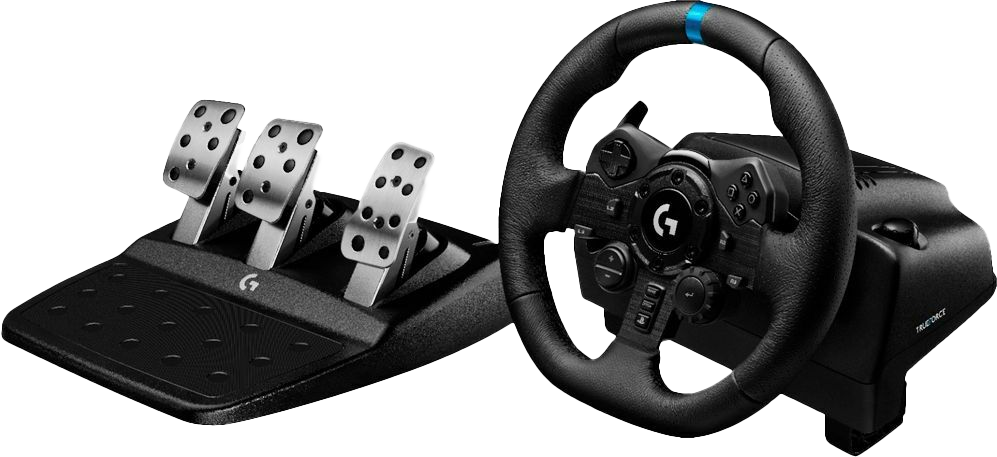
The Wheel comes with a 1.5 to 2.0 Newtonmeter motor that delivers the FFB through gears and belts, plenty of buttons, included table mounting clamp, in PC/XBOX and PlayStation variants.
The Pedals come with a clutch and the brake has progressive resistance, while using regular potentiometers to measure the amount of input by distance.
In theory that’s all you need to get started for roughly 280€ all new.
Other entry level wheels with varying specification below or above the G923 come from Thrustmaster:
Rig
While a desk is enough to mount the wheel, keeping the pedals in place usually needs a solution for example by putting them against a wall. Also the chair can become a moving element with or without casters. Thus, it's better to mount everything to a dedicated sim racing rig. For the entry level a foldable variant or wheelstand, that can be stored quickly, will be enough. The wheelstand comes without a seat, but offers the option to pick up the chair’s legs or casters to keep the distance between pedals and seat fixed. Options are
- GT Omega Wheelstand - 120€ Amazon.de
- Next Level Racing Wheelstand - 210€ Amazon.de
- Next Level Racing Formula Lite Pro - 300€
- PLAYSEAT Challenge X - 250€ Amazon.de
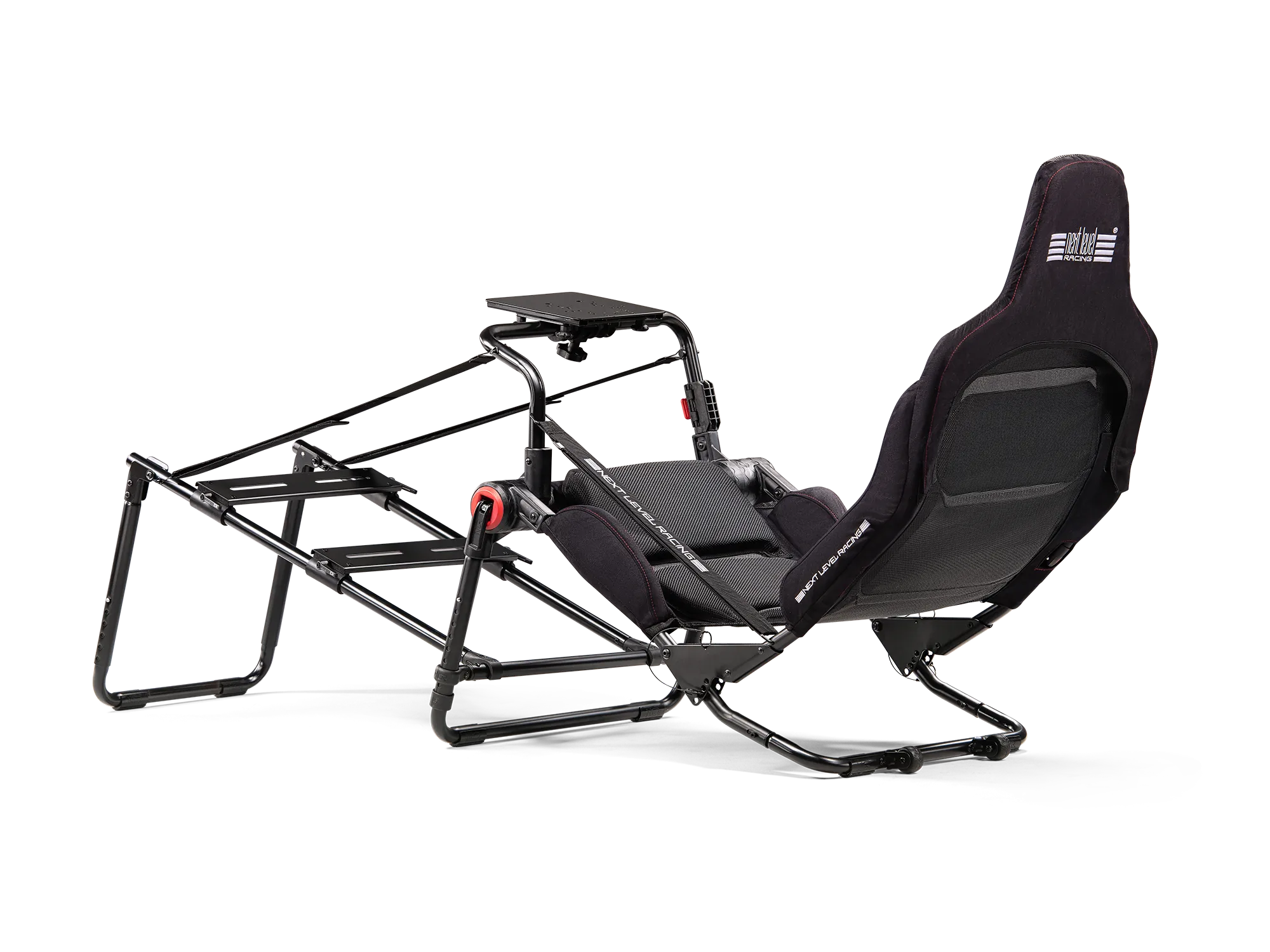
That’s it. Neither a special Monitor nor different computer than the one you already have is needed to get started. If your laptop has a dedicated graphic card, it might even be enough for sim racing.
Category 2 - Intermediate Level
Total price for sim racing related equipment (PC, Monitor excluded):
520€ - 1000€
(+800€ for Monitor and PC)
Wheel and Pedals
In recent years wheels with direct drive technology have become much more affordable, making it easier to skip the entry level equipment. Direct drive refers to the steering axis being the shaft going inside the electric motor - no gears or belts in between. This provides better response times of the FFB, giving it a more crisp feeling, a more compact design and usually results in less heat and noise production.There is a variety of products and prices. The good thing is: Should you want to upgrade to a more powerful motor later, the wheel rims often stay compatible.
In this category wheel bases are bought separately from the wheel rim, as there are generally more options available. If you prefer a formula rim, D-shaped or round - you have the choice within the manufacturers ecosystem. However, there are bundles on offer at almost all times that are cheaper than the individual parts.
Bundles
- The Moza R3 - 400€ - with a 4 Nm motor, a D-shaped rim and hall sensor pedals (measuring distance)
- The Moza R5 - 460€ - with a 5.5 Nm Motor and otherwise the same rim and pedals
- Fanatec CSL DD - from 520€ - with a 5 Nm motor (upgradable to 8Nm), with various wheel rim options and pedals. The pedals can be modified to include a load cell to measure braking pressure instead of distance to better simulate real life braking pedals - though this requires a rig. Load cell pedals allow for better precision during the crucial braking phase and are advised for any cars not having ABS.
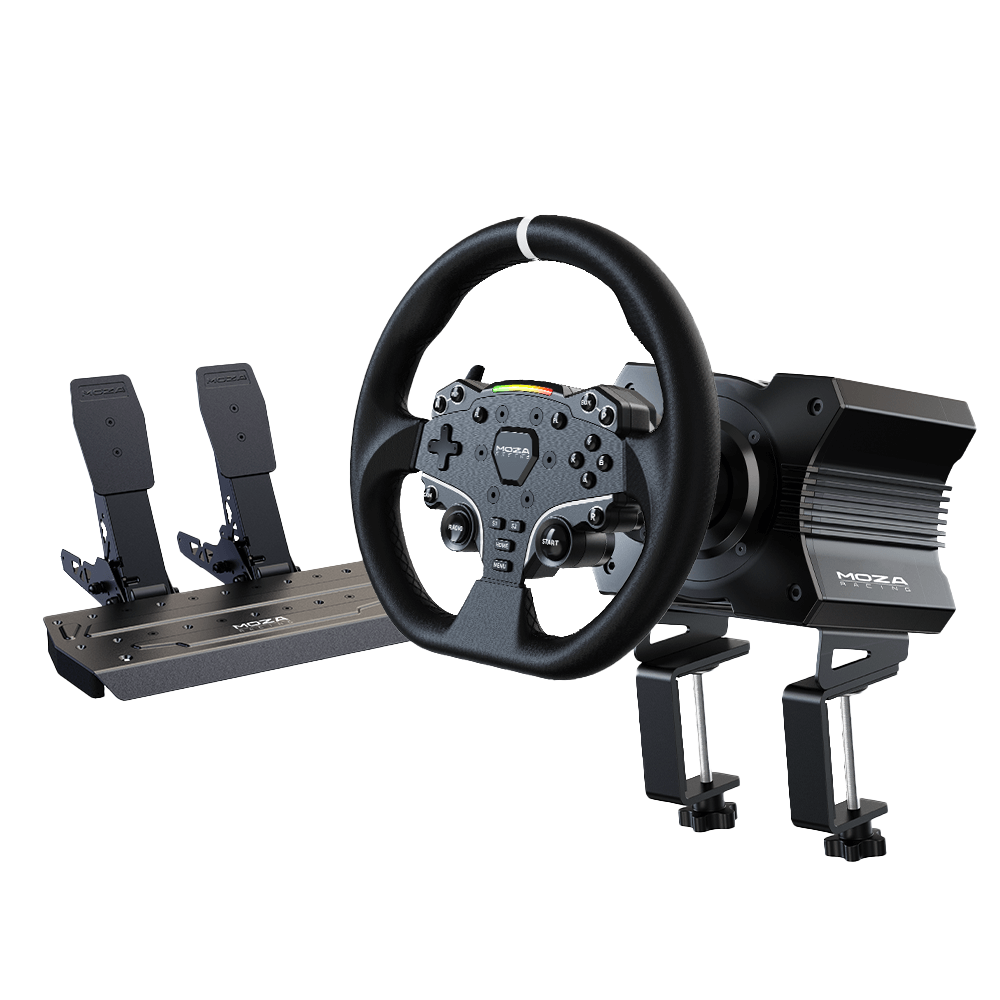
Rigs
Unless you are going for a pedal set with load cell, the rigs mentioned in category 1 are still viable. We’ll introduce stationary rigs in category 3
Monitor and PC
While not necessary, for a more immersive experience a bigger monitor helps. Since spatial awareness is particularly important in simracing, going for wider monitors is advised. The next step away from a 16:9 monitor is going for an aspect ratio of 21:9. These are typically 34-35” diagonally and slightly curved. They will allow you to simply see more in the virtual world. This is important as vital information from the car is perceived visually.
Other important factors for monitor specifications are the refresh rate (higher is better) and response time (lower is better). 120hz and up for the refresh rate and 5ms or lower for the response time are quite normal these days and are fine for sim racing in this category. Bigger monitors have more pixels that need to be calculated and to make full use of a 120hz monitor it is now also advised to have a PC able to produce between 90-120 frames per second. However, the frame rate is not necessarily constant. G-Sync/FreeSync technology of the monitor helps to match varying frame rates with the monitor’s hz to provide a stutter free experience.
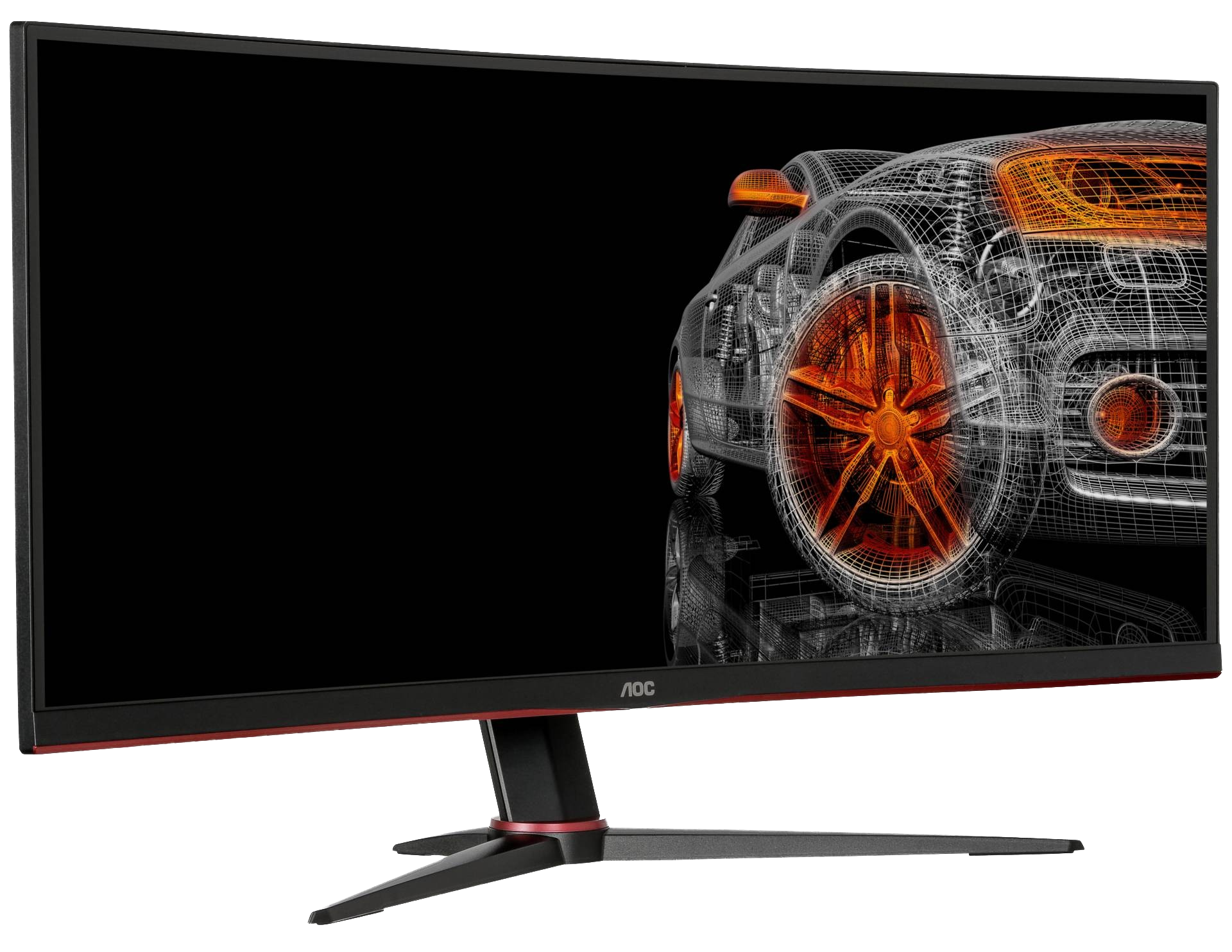
With the large variety in hardware options and fast development of prices, it is tricky to provide tangible numbers. But monitors are available from 300€ and PC’s from about 500€.
Category 3 - Advanced Level
Total price for sim racing related equipment (PC, Monitor excluded):
720€ - 2500€
(+1500 to 2000€ for Monitor and PC)
Wheel and Pedals
For this category we suggest using wheel bases with at least 8 Nm motors. The range in this category goes up until about 16 Nm, which is indeed quite a spread. However, the differentiating metric to the lower category here is not just the maximum or permanently available force, but also the capability of the motor to produce forces quicker (measured in Nm per millisecond), that leads to an even crisper feeling and better connection to the car. There is huge variety in build quality as well as amount of buttons and functions on the rims, resulting in a large spread in pricing, while generally providing a similar experience from a technical point of view. We will have many more manufacturers available now and much more flexibility.
Additionally now load cell pedals are the go to hardware for your brake inputs. Some manufacturers will have bundles with wheel base, wheel rim and pedals. But it’s very common to combine the items to your liking, with base, rim and pedals potentially each from different manufacturers. Other pedals work alongside any base and wheel rim, regardless of the manufacturer, as a standalone device.
For wheel bases and steering rims some manufacturers have their own ecosystem and connectivity, while some have part and others full compatibility with 3rd party rims.
Brands
Fanatec has their own ecosystem and connection technology between base and rim. The advantage here is that you can quickly upgrade either base or rim interchangeably and you will never have a cable connected to the rim allowing for a cleaner setup.
Moza equally has their own ecosystem with the same properties as fanatec: Interchangeability and no cables between base and rim.
Asetek equally has their own ecosystem with the same properties as fanatec: Interchangeability and no cables between base and rim. Additionally Asetek offers a quick release mechanism that is compatible with any other 3rd party USB wheel rim, which allows a little more flexibility.
Simagic equally has their own ecosystem with the same properties as fanatec: Interchangeability and no cables between base and rim.
Lower end in this category
- Fanatec CSL DD (8Nm) with a Formula rim and their CSL pedals including the load cell modification - for 720€. You can still replace the rim later with another one from their range
- Moza R9 bundle (9Nm) without pedals ranging from 730€ - 900€ depending on the rim Pair these for example with the Moza CRP Pedals - 460€
- Thrustmaster T818 with 10 Nm from 650€ or as bundle with rim for 1100€
- Logitech DD Pro with 11 Nm and rim with dual clutch pedals for 1100€
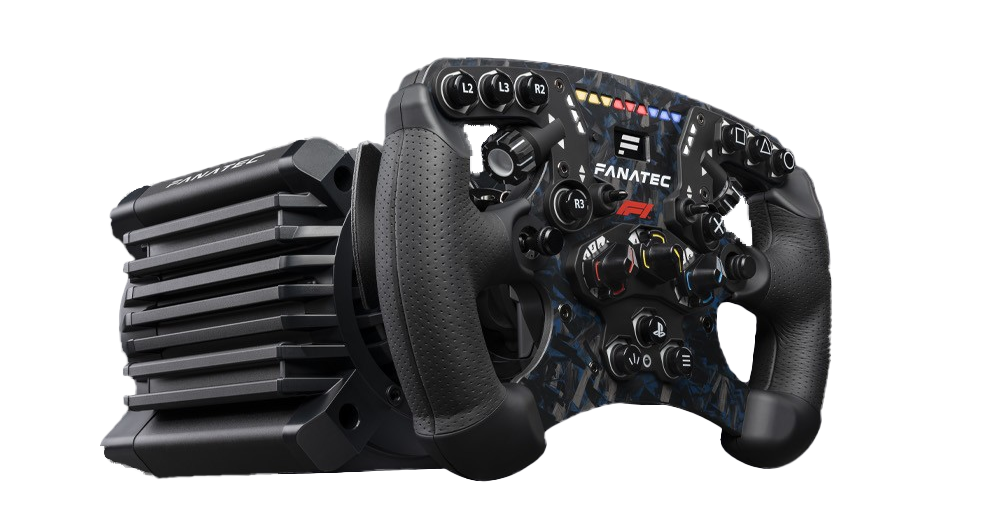
Higher end in this category
- Simagic Alpha Mini (10 Nm) - 540$, or Alpha (15 Nm) - 750$, combined with a Simagic rim - 280-500$.
- Fanatec Clubsport DD 12 Nm - 800€ - or 900€ as bundle with rim.
- Fanatec Clubsport DD+ 15 Nm - 900€ - or 1300€ as bundle with rim.
- Moza R12 bundle from 910€
- Moza R16 base from 1200€ (we are on the edge to category 4 here)
- Asetek LaPrima Bundle including rim and load cell pedals from 1500€ (use code: popometer for 5% off!)
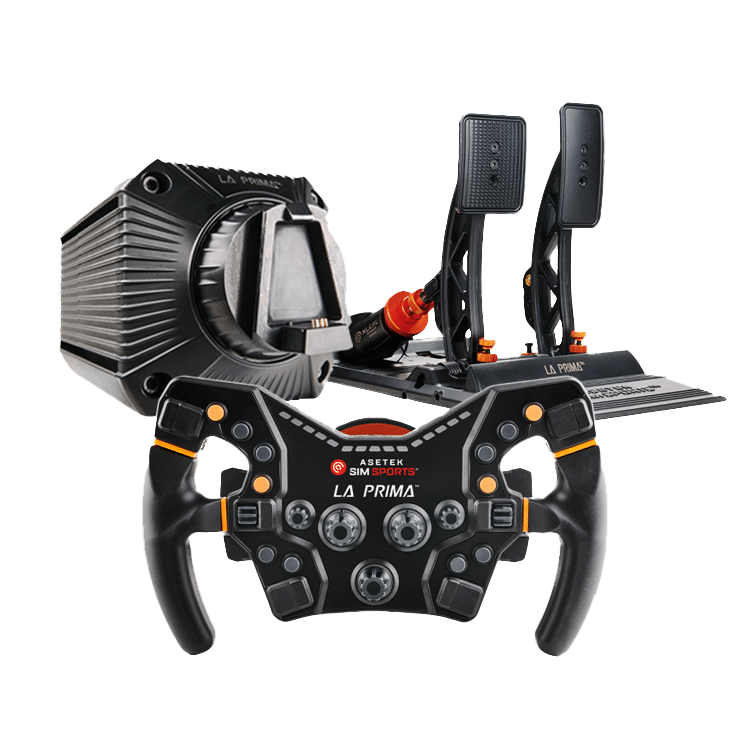
Load Cell Pedals(2 or 3 pedals)
- VRS Pedals from 600€ up to 140 kg of pressure (individual pedals)
- Heusinkveld Sprint from 640€ up to 65 kg of pressure (individual pedals)
- Asetek LaPrima from 420€ (as a unit) Use coupon: popometer for 5%
- Asetek Forte from 630€ (individual pedals) Use coupon: popometer for 5%
- Fanatec V3 (as a unit) from 400€
- Moza CRP from 500€ (as a unit)
- Simagic P1000 from 520$
- Simlab XP1 from 480€
- VENYM Pedals from 645€ (individualization possible)
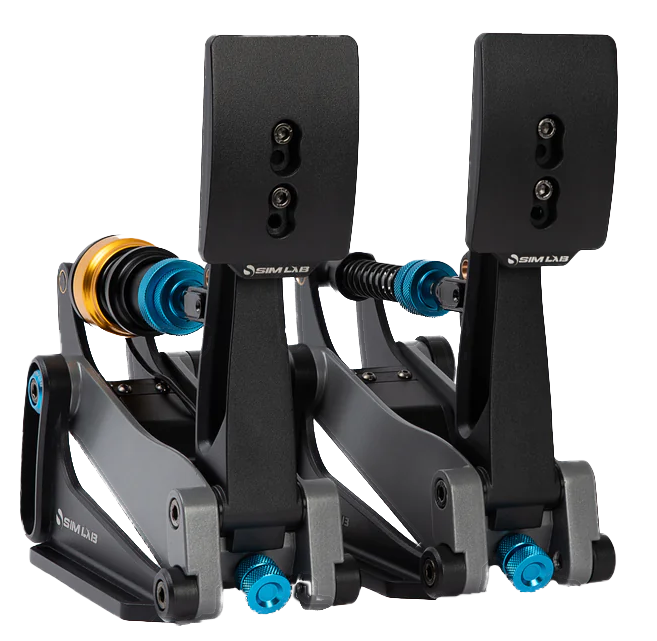
There are many more…
Rigs
Now that we are using stronger wheel bases and load cell pedals it will not be enough to play on a desk or in your regular office chair. The forces become too large, and things will start to move and vibrate - so we need to keep things in place with a proper aluminum rig. There again is a huge variety. From simple aluminum beams to custom profiles with more design aspects and color to them or additional features like gear lever or cup holders. They are all pretty sturdy, but generally: The more mounting points there are in the right place, the more rigid the whole construction. Some rigs will come with a seat, some won’t. The options for seats have grown equally large. Part of the rig is also the mounting of the monitor. Some rigs will have a mounting option included, but you can always choose to have a separate monitor stand, which decouples the monitor from any remaining flex in the rig. All wheel bases and pedals have a certain size, that needs to be supported by the rig. Most rigs will come with compatibility lists.
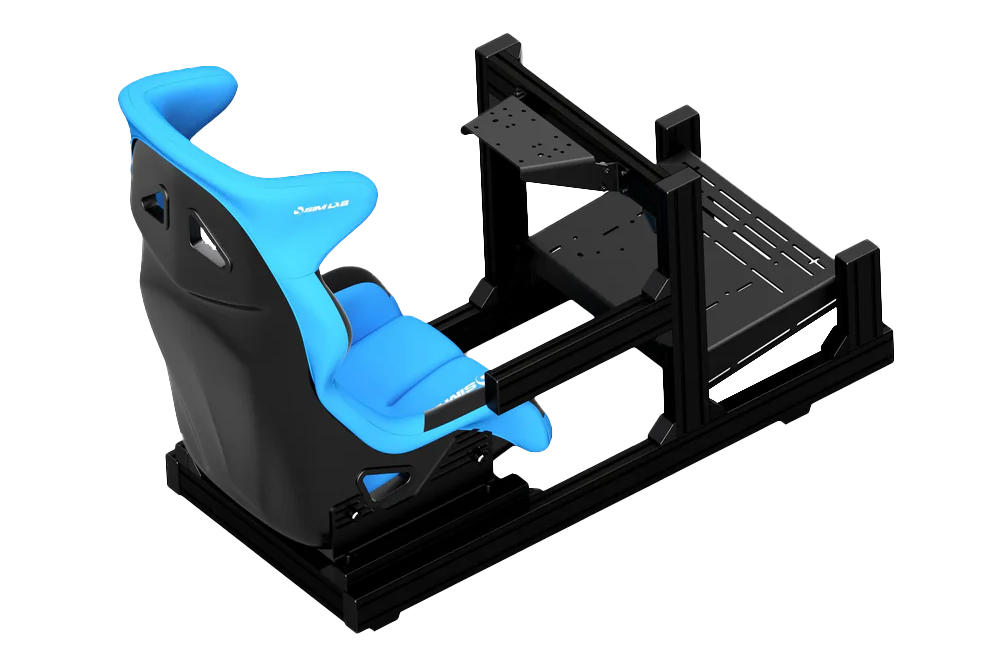
- SimLab GT1 Evo from 390€ or Pro for 590€
- NextLevelRacing GTELITE Lite from 600€
- GT Omega PRIME from 500€
Many, many more exist these days.
Monitor and PC
Now we also at least advise to use ultra wide monitors with an aspect ratio of 21:9, however the even better options are typically 49” ultra-wide screens with a 32:9 ratio. They come curved, too, allowing you to already look through the driver’s side window and achieve more close to real life sizes of the dashboard and surrounding. However, of course this means more pixels that need to be calculated, so the required PC for this also needs to have a bit more performance.
Both monitors and PC’s will start around the 1000€ ballpark each and many providers exist. For the monitor 144hz should be the minimum target, with response times of no more than 2 milliseconds. The PC should include at least a 3070 NVIDIA (or an equivalent AMD RX 6800) graphic card.
Category 4 - PRO Level
Total price for sim racing related equipment (PC, Monitor excluded):
3000€ and (far) above
(+2500€ to 4000€ for Monitor(s) and PC)
Wheel and Pedals
For this category we suggest using wheel bases with no less than 17 Nm. All bases here will provide hard to differentiate Force Feedback (However, for iRacing, due to differences in the software, we recommend Simucube). It’s all about budget and compatibility with other equipment, mainly wheel rims you desire. These are no toys, but tools. While many manufacturers offer bundles of base and rim (or even pedals), the rims are now often also a separate choice from other manufacturers.
Load Cell Pedals are still fine in this category. You might look for stronger, more reliable construction that isn’t reaching its limits by your inputs. There are also hydraulic pedals, offering an even more authentic brake pedal feeling. And to top it off, Simucube offers a motor driven pedal that is able to replicate any brake pedal imaginable. Though, it also comes with an unimaginable price tag.
Brand Selection
Fanatec has their own ecosystem and connection technology between base and rim. The advantage here is that you can quickly upgrade either base or rim interchangeably and you will never have a cable connected to the rim allowing for a cleaner setup.
Moza equally has their own ecosystem with the same properties as fanatec: Interchangeability and no cables between base and rim.
Asetek equally has their own ecosystem with the same properties as fanatec: Interchangeability and no cables between base and rim. Additionally Asetek offers a quick release mechanism that is compatible with any other 3rd party USB wheel rim, which allows a little more flexibility.
Simagic equally has their own ecosystem with the same properties as fanatec: Interchangeability and no cables between base and rim.
Simucube has their own ecosystem as well, but they cooperate with select 3rd party wheel rim manufacturers who use quick release mechanisms and wireless connectivity compatible with Simucube. They are the most renowned brand in this area and your go to choice, as well as our recommendation.
Virtual Racing School (VRS) offers a low budget base without a proprietary ecosystem attached, if you are willing to spend a little time learning about the various rim and connection options.
Bases & Bundles
- Simucube Bundles with either Sport (17 Nm) or Pro (25 Nm) from 2000€ (There’s usually no reason to go for the “Ultimate” version)
- Simagic AlphaU with 23 Nm from 1000$
- Fanatec DD1 with 20 Nm from 1000€
- Asetek Forte from 1100€ or as bundle from 2200€ including pedals and rim (5% off with code: popometer)
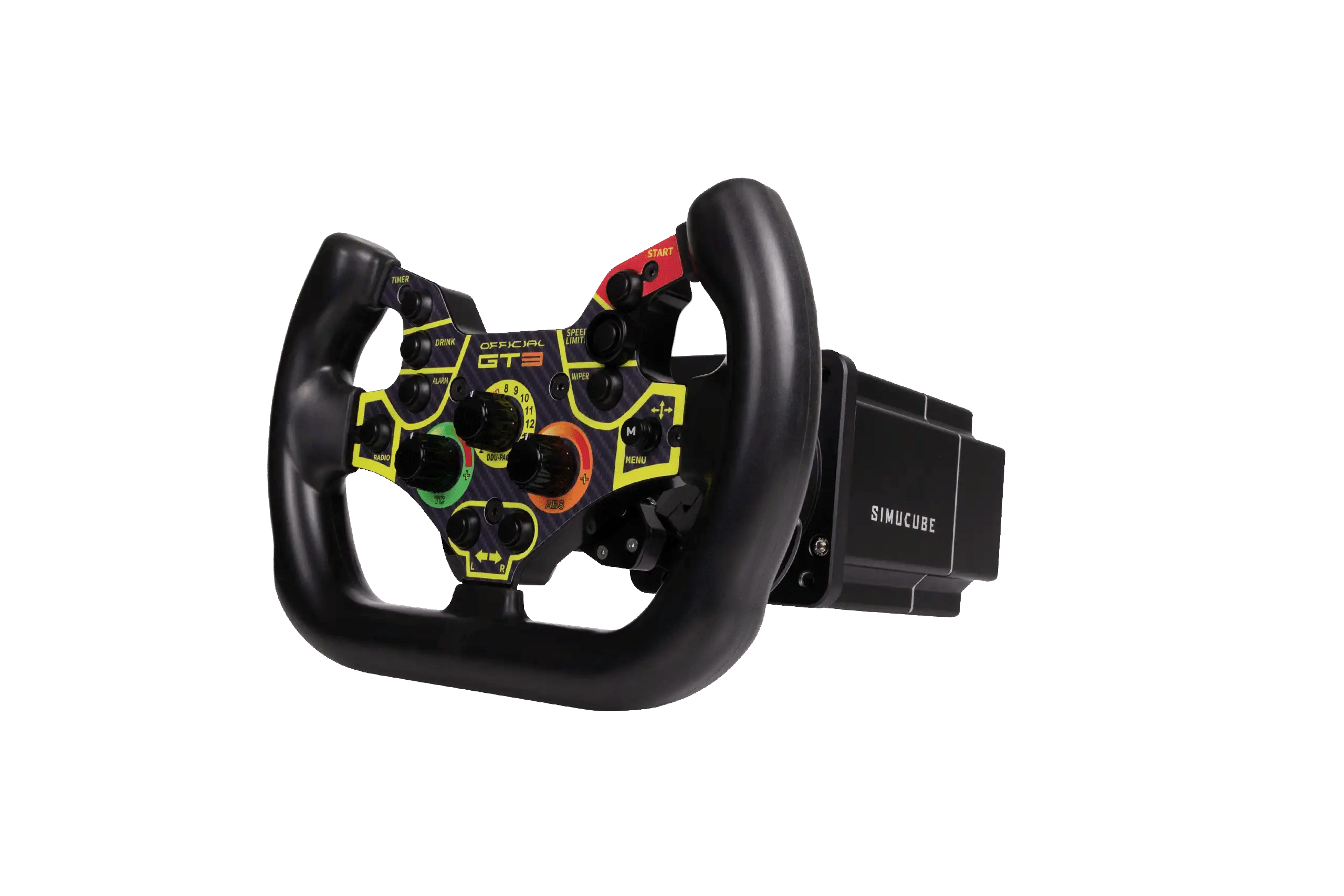
Load Cell Pedals(2 or 3 pedals)
Pedals to offer up to 200kg of force either with load cells or hydraulics.
- PurrrPRO by FATBLACKCAT with quite remarkable engineering from 890€ (founded by a former McLaren F1 Engineer)
- VRS Pedals from 600€ up to 140 kg of pressure (individual pedals)
- Heusinkveld Ultimate from 1200€ up to 130 kg of pressure (individual pedals)
- Asetek Invicta from 950€ ( Best bang for buck. As a unit or individual, 5% off with code: popometer)
- Simagic P2000 from 650$
- Simlab XP1 from 480€
- Cubecontrols SP01 from 1100€
- VENYM Pedals from 645€ (individualization possible)
- Simucube Active Pedal from 1900€ (Due to being mounted on a motor this pedal allows to recreate virtually any pedal behavior, solely by changing the configuration in the software, without the need to physically adjust parts)
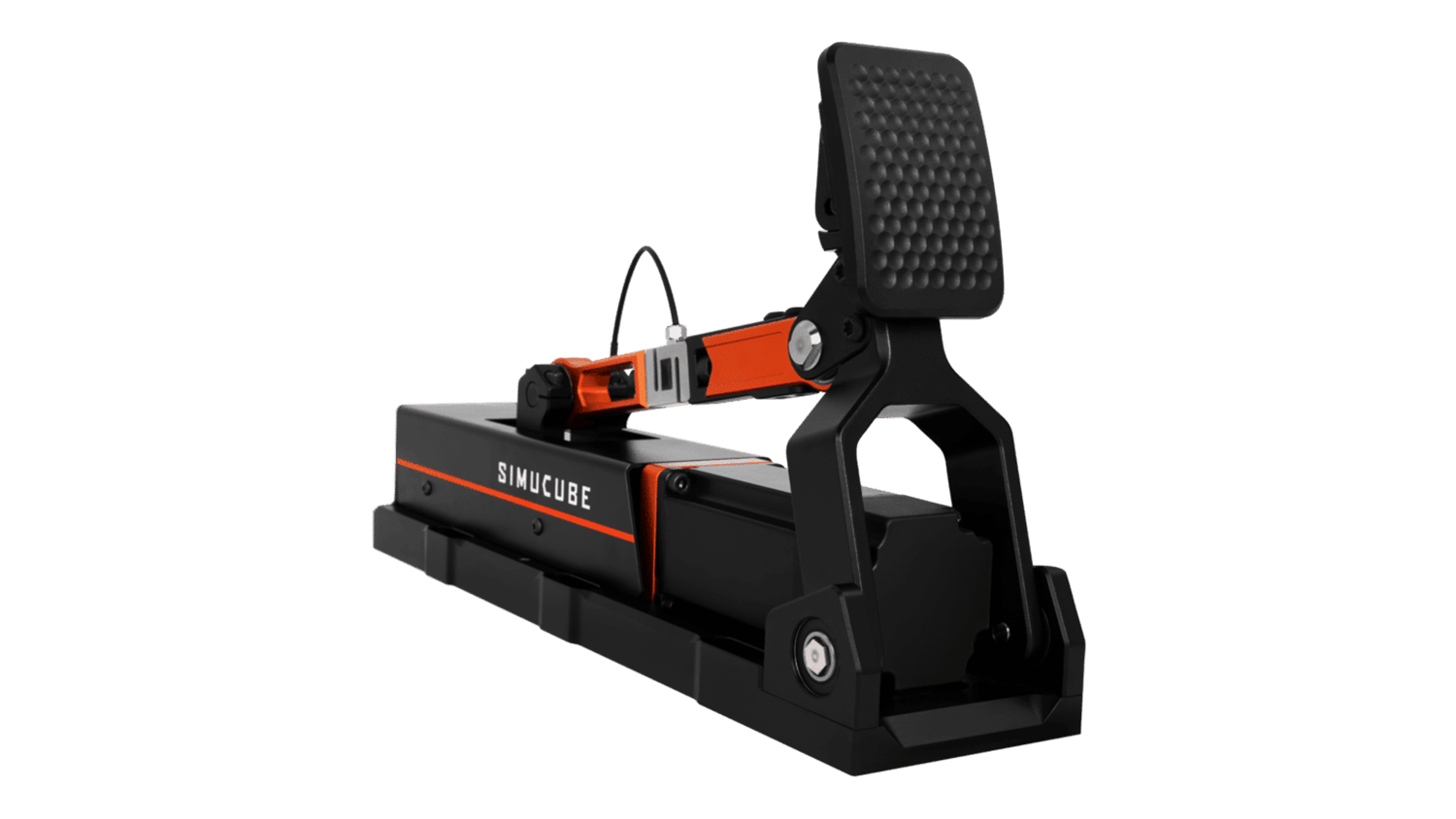
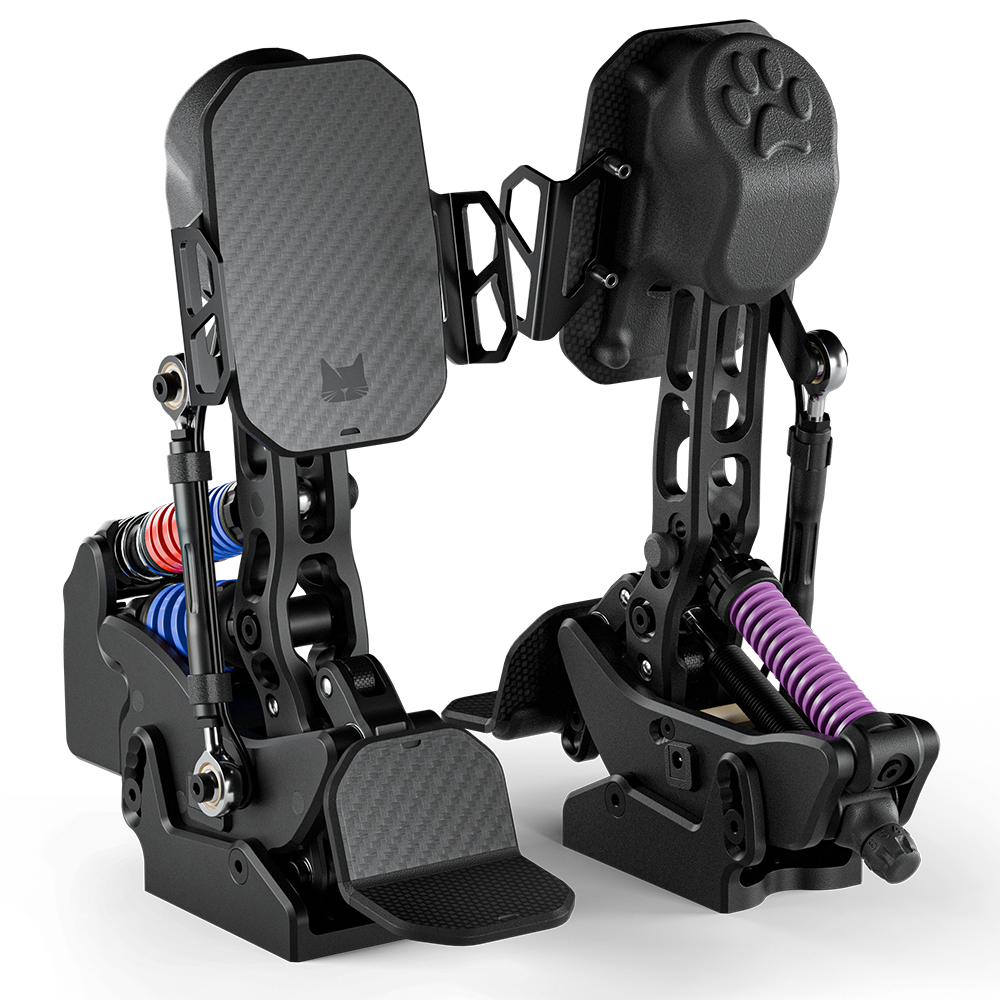
There are many more…
Custom Rims
For every direct drive system that doesn't come with its own wheel or if you don’t find anything in the manufacturers range, there are 3rd party wheel rim providers.
Generally with such high forces you want a slightly bigger rim than you get with the fanatec formula rim for example, that only spans 26cm across. Formula rims typically have 28-30 cm while GT style rims can be around up to 32cm. You can also fit wheels from the real car if you can get your hands on one. Other than that there are several replicas for anything you can think of.
From Formula rims with displays to button-less rims for drifting - everything is possible. Yet, while custom solutions are nice for some, most people might want a working solution. Some rims require a cable, some work wirelessly with some bases. For example the Simucube base offers wireless support. Some rims come with their own wireless dongle. Some brands focus on providing sim racing rims.

- Cube Controls offers various Formula rims and GT Rims in many sizes, shapes, button configurations, clutches, with or without cable - all from 640€
- Precisonsimengineering has a plethora of rims from GT to Formula starting at 900 GBP
- Gomezsimindustries also produces a range of customizable rims, both GT and Formula with and without display and countless buttons, both USB and wireless Simucube options - starting at 615€
- Ascher sells several formula rims from 750€ with a wireless option for Simucube.
- Notably Ascher also sells button plates that can be mounted on any compatible rim, offering even more flexibility
Many more also exist here.
Rigs
With the powerful bases and load cell pedals, simracing becomes quite a workout for both driver and the equipment. The rig can quickly become a liability if it’s not rigid enough. Any flex in the rig is a loss of detail on both the brake and in terms of force feedback. Therefore the rig as well as the seat need to be able to support, not hinder you. Usually all rigs offer a high amount of adjustability and extra parts to mount shifters, hand brakes or other racing relevant equipment. Many companies exist world wide, so here is a selection of readily available rigs.
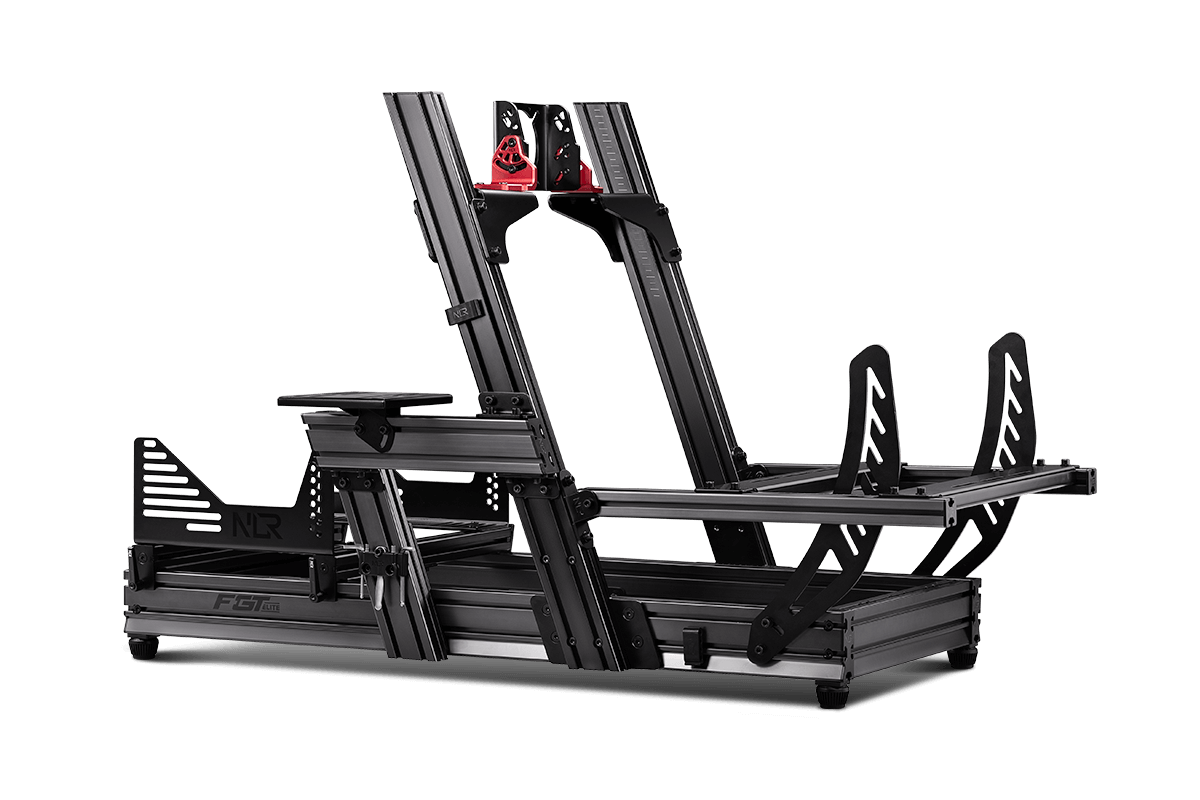
- SimLab P1X from 790€
- NextLevelRacing F-GT Elite Lite from 1250€
- GT Omega PRIME from 750€
- Made from standardized aluminum beams from 577€
- Customizable from standardized parts from 600€
Seats
You can use any seat that is stiff and sturdy and doesn’t have too much padding. Race seats from OMP, Sparco, MOMO, Recaro, Sabelt, etc. all also work for simracing, but of course they have costly features not needed in simracing. Some of them offer specific sim racing seats at a lower price. But there are also other vendors and as mentioned many rigs have the options to come with a seat right away. You need to be comfortable in the seat and have enough lower back support. Also think of ventilation as a factor as your sweat needs to evaporate. Minimum prices are around 300€.
A great alternative are Lusomotors "RCC" Seats that you can customize and buy directly from us. You can choose from several seats, coatings, padding material and shapes, colors for the seat and stitching. Get in touch!
RCC Catalog: CLICK
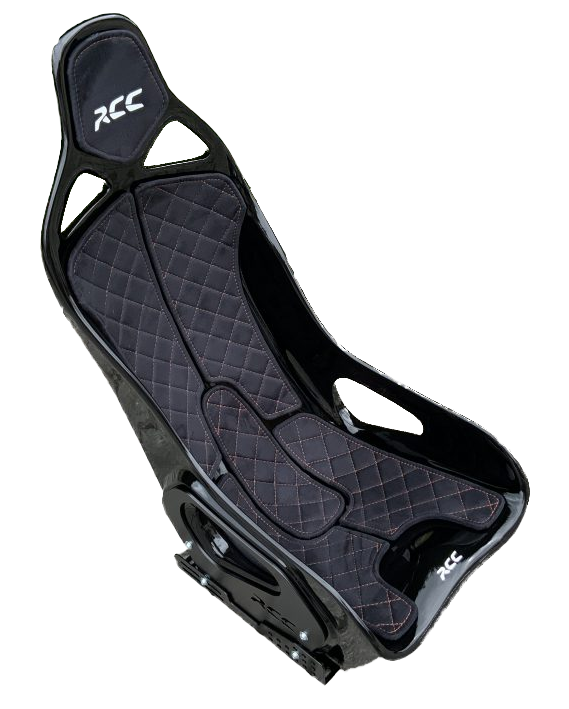
Monitor and PC
You should go for at least an ultra wide monitor with a size of 49”. The benefit is that a single monitor is easier to install and set up than a triple screen setup, which is the other common option in this category. From an immersion perspective the triple screen setup is superior, as you can see out the side windows, which will give you much better spatial awareness around other cars. Both ultra wides and even more so triple screen setups need a powerful PC able to produce several million pixels more than a hundred times per second. 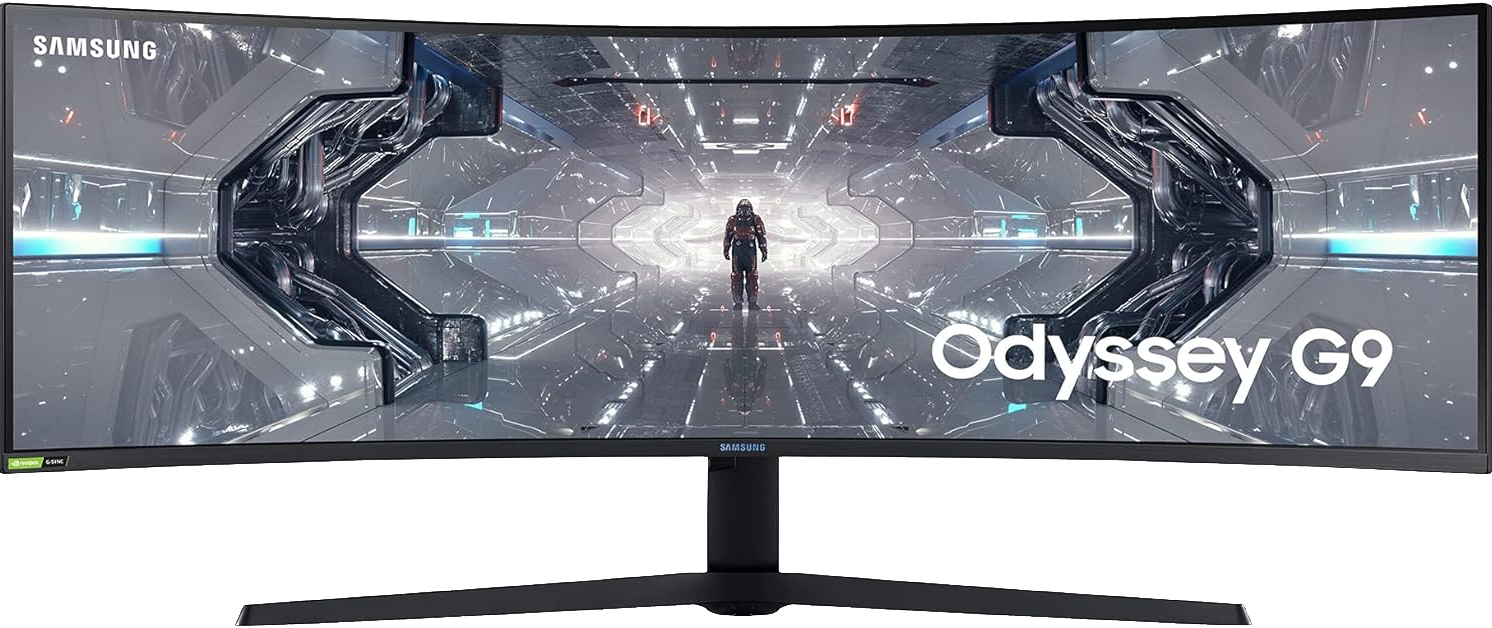
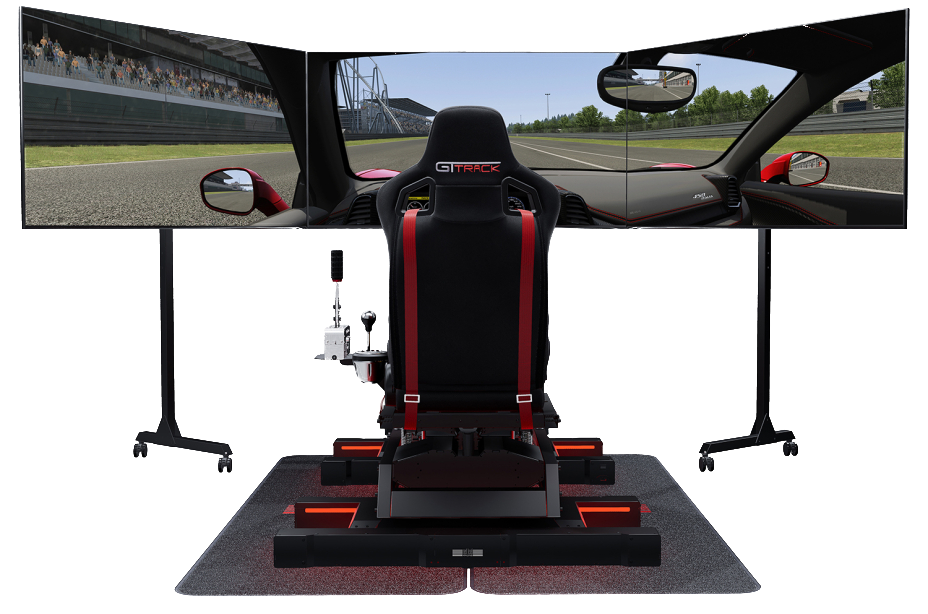
Both monitor variants will start around the 1000€ ballpark and many providers exist. If opting for triple screens it's best to go with 3 of the same kind - and some even offer “bezel free kits” allowing you to merge the 3 monitors into one continuous panel. For the monitors 144hz should be the minimum target, with response times of no more than 1 millisecond. The PC should include at least a NVIDIA 4070 or better (or AMD 7800 XT equivalent) graphic card. Sim racing is often limited more by the CPU than the Graphic card. Currently AMD processors are the better choice: 5800X3D, 7800X3D. Systems start around 1900€.
Virtual Reality

